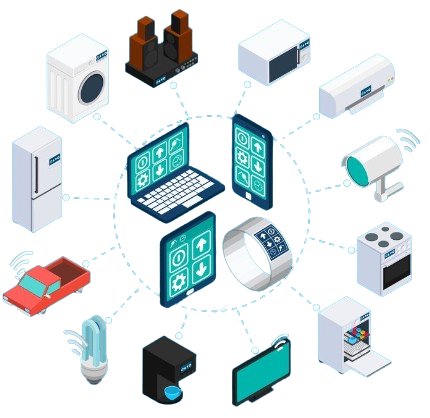Focusing on energy efficiency in IoT devices is a win-win scenario. It supports environmental sustainability, reduces operational costs, and meets the growing demand for eco-friendly technology. As the IoT landscape expands, energy efficiency will play an increasingly vital role in shaping the future of connected devices.
The proliferation of Internet of Things (IoT) devices is transforming our world, from smart homes to industrial automation. However, as the number of connected devices grows, so does the concern about their energy consumption. Energy efficiency has become a critical focus for developers and manufacturers striving to make IoT devices more sustainable and cost-effective. In this blog post, we will explore the importance of energy efficiency in IoT devices, the strategies to achieve it, and the benefits it brings to both consumers and the environment.
The Importance of Energy Efficiency in IoT Devices
With billions of IoT devices in use globally, the aggregate energy consumption is significant. Energy efficiency in IoT devices is not just about reducing electricity bills; it has far-reaching implications for the environment and the sustainability of the technology ecosystem.
- Environmental Impact
Reducing the energy consumption of IoT devices can significantly lower greenhouse gas emissions. As these devices become more energy-efficient, they contribute less to climate change, supporting global efforts to reduce carbon footprints.
- Cost Savings
For consumers and businesses alike, energy efficiency translates to cost savings. Lower power consumption means reduced electricity bills and longer battery life for devices, which can lead to fewer replacements and less electronic waste.
- Improved Device Performance
Energy-efficient IoT devices often perform better due to optimized resource usage. This can result in faster processing, reduced heat generation, and longer operational lifespans, enhancing the overall user experience.

Strategies for Achieving Energy Efficiency in IoT Devices
Achieving energy efficiency in IoT devices involves a combination of hardware and software optimizations. Here are some key strategies:
- Low-Power Hardware
Selecting components designed for low power consumption is crucial. This includes using energy-efficient microcontrollers, sensors, and communication modules. Advances in semiconductor technology have enabled the development of components that can perform complex tasks while consuming minimal energy.
- Optimized Software
Efficient coding practices can significantly impact the energy consumption of these devices. This involves minimizing the computational load, optimizing algorithms, and ensuring that devices enter low-power modes when not in use. Regular software updates can also improve energy efficiency by addressing any inefficiencies identified post-deployment.
- Network Optimization
The way these devices communicate with each other and the cloud can influence their energy consumption. Using energy-efficient communication protocols, such as Bluetooth Low Energy (BLE) and Zigbee, can help reduce power usage. Additionally, optimizing data transmission frequency and volume can further enhance energy efficiency.
- Energy Harvesting
In some cases, These devices can be equipped with energy-harvesting technologies to capture ambient energy from sources like light, heat, or vibrations. This can supplement or even replace traditional power sources, making devices more sustainable and reducing the need for frequent battery replacements.
Benefits of Energy Efficiency in IoT Devices
The benefits of focusing on energy efficiency in these devices are manifold and extend beyond just the immediate users.
- Enhanced Sustainability
Energy-efficient devices contribute to a more sustainable environment by reducing the overall energy demand and associated carbon emissions. This aligns with global sustainability goals and helps create a greener future.
- Increased Adoption
As consumers and businesses become more environmentally conscious, the demand for energy-efficient IoT devices is likely to rise. Manufacturers that prioritize energy efficiency can gain a competitive edge and drive higher adoption rates.
- Better Compliance
Many regions have stringent regulations regarding energy consumption and electronic waste. Developing energy-efficient devices can help companies comply with these regulations and avoid potential penalties.
- Positive Brand Image
Brands that prioritize energy efficiency and sustainability in their products can enhance their reputation and appeal to eco-conscious consumers. This positive brand image can lead to increased customer loyalty and trust.
Conclusion
In the rapidly evolving world of IoT, energy efficiency is a crucial factor that cannot be overlooked. By implementing strategies to reduce power consumption, manufacturers can create devices that are cost-effective, high-performing, and environmentally friendly. Tanbits offers IoT services that can help businesses develop energy-efficient IoT solutions.
Focusing on energy efficiency in IoT devices is a win-win scenario. It supports environmental sustainability, reduces operational costs, and meets the growing demand for eco-friendly technology. As the IoT landscape expands, energy efficiency will play an increasingly vital role in shaping the future of connected devices. By embracing this focus, we can ensure that IoT technology’s benefits are realized sustainably and responsibly.
BACK










